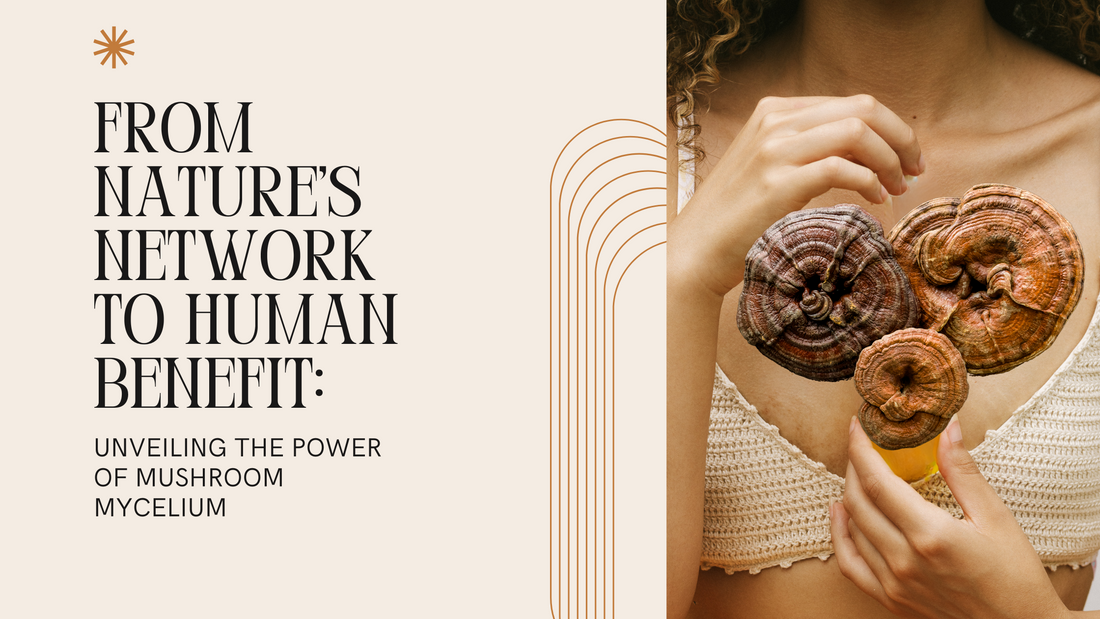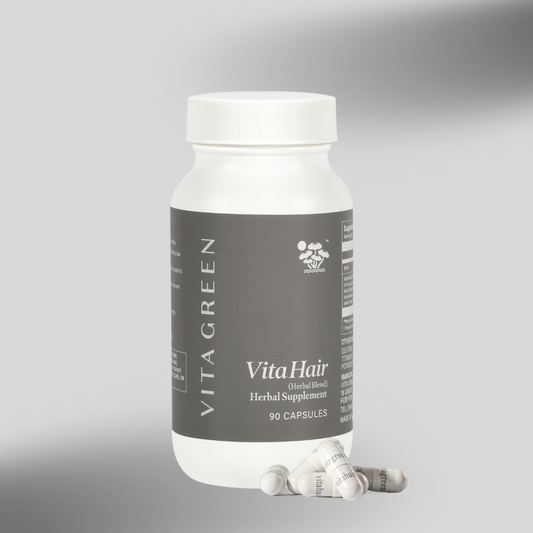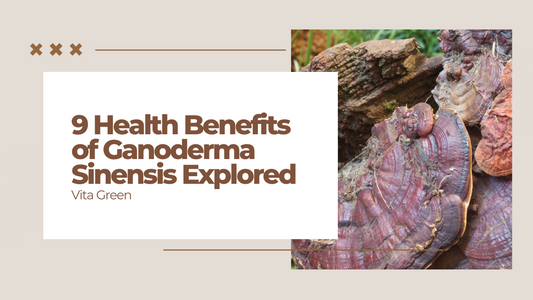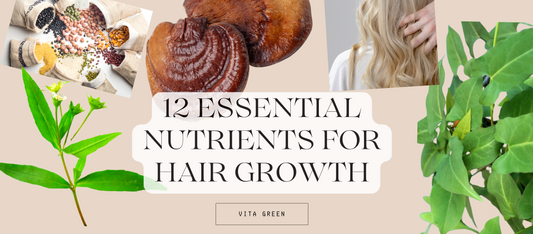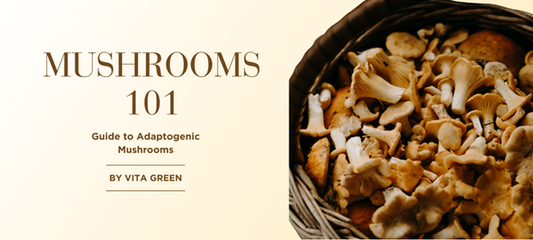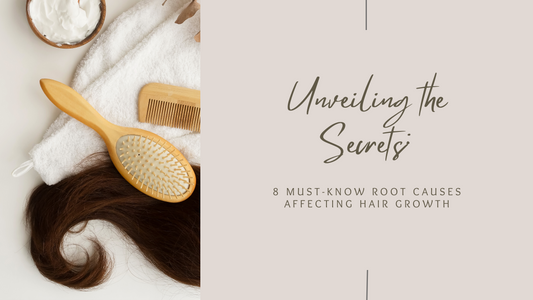By Frances Fajardo
What is Mycelium?

Have you ever encountered a fuzzy patch on a forgotten sandwich or a slice of cheese left a bit too long in the fridge? Chances are, you've unwittingly stumbled upon mycelium. However, in the wild, mycelium transcends its role as a mere indicator of spoiled food; it is a thriving network of thin fungal strands, known as hyphae, orchestrating a symphony of interconnectedness beneath our feet.

Picture mycelium as the subterranean internet of the natural world. Just as plant roots seek out nutrients in the soil, hyphae extend their reach, delving into their surroundings and secreting enzymes onto organic matter—whether it be decomposing leaves, fallen logs, or unsuspecting insects. These enzymes perform alchemical feats, breaking down complex organic matter into digestible morsels. This process not only sustains the fungi but also nourishes plants and a myriad of other organisms, creating a web of interdependence within ecosystems.
Yet, mycelium is not merely a humble recycler of organic debris; it serves as a vital support system for mushrooms. Analogous to how plant roots anchor them in the soil, mycelial networks provide mushrooms with stability and a constant supply of essentials such as nutrients, water, and support.
While mycelium toils away beneath the surface, its terrestrial manifestations—the mushrooms—are more commonly recognized. Whether brewed into tea or encapsulated in supplements, mushrooms often steal the limelight. However, it is essential to acknowledge the silent heroism of mycelium—the unseen force that sustains life's tapestry.
How Does Mycelium Work?
In the intricate tapestry of fungal life, reproduction is not a solitary endeavor; it is a dance of fusion and collaboration that shapes entire ecosystems.

When the mycelia of compatible fungi encounter one another, they can merge, intertwining their cells and blending their genetic material. This fusion culminates in the production of new spores, housed within the fungus' reproductive structures. Whether nestled within truffles or exposed on the surface like mushrooms and crusts, these spores are the culmination of fungal reproduction, occurring when environmental conditions are just right.
But, reproduction is not the sole purpose of mycelium's existence. Many fungi disperse their genetic legacy through spores—tiny, seed-like structures that hitch rides on the wind or are carried by animals. Upon finding fertile ground, these spores germinate, initiating the growth of new mycelium and perpetuating the fungal life cycle. Furthermore, fungi can propagate by fragmenting their mycelium, with each fragment capable of establishing an independent network, contributing to the resilience and adaptability of fungal communities.

However, mycelium's role extends beyond reproduction; it fosters symbiotic relationships with plant roots, forming mycorrhizal networks—a cross-kingdom web of interconnectedness. Within this symbiosis, plants provide fungi with sugars and fats synthesized through photosynthesis. In return, fungi aid plants in nutrient and water absorption, extending their reach beyond the confines of roots and root hairs.
In essence, mycelium serves as nature's underground architect of interconnectedness, facilitating exchanges that fuel life above and below ground. It underscores the profound interdependence of all living beings in the natural world—a testament to the intricate balance and harmony that pervades ecosystems. So, the next time you indulge in mushroom tea or supplements, take a moment to acknowledge the humble mycelium—the silent orchestrator of life's interconnected dance.
Harvesting Mycelium

Harvesting mycelium typically involves the collection of fungal cultures grown in a controlled environment, such as a laboratory or a specialized cultivation facility. Here's a general overview of the process:
- Selection of Growing Medium
Cultivating mycelium on various substrates offers a versatile approach to harnessing its potential for diverse applications. The selection of a suitable substrate is a critical factor in mycelium cultivation, as it directly impacts the growth, development, and characteristics of the resulting fungal culture. Here's an in-depth exploration of the substrates commonly used for mycelium cultivation:

- Grains - Grains like rice, oats, wheat, or millet are popular substrates for mycelium cultivation, particularly in laboratory settings or small-scale operations. These grains provide a nutritious and readily available source of carbohydrates and nutrients for the growing mycelium. Grains are often used as a starting point for inoculating mycelium cultures, with the mycelium colonizing the grain substrate before being transferred to larger-scale cultivation substrates.

- Sawdust - Sawdust from hardwood or softwood trees is another commonly used substrate for mycelium cultivation, especially for species like Shiitake (Lentinula edodes) or Oyster mushrooms (Pleurotus spp.). Sawdust provides a fibrous and porous structure that allows for optimal air circulation and water retention, promoting healthy mycelial growth. It's often used in the production of mycelium-based products such as mushroom spawn or mycelium bricks.

- Straw - Straw, particularly from cereal crops like wheat, barley, or rice, is an abundant and cost-effective substrate for mycelium cultivation. Straw offers a rich source of cellulose and hemicellulose, which the mycelium can efficiently decompose and utilize as nutrients. It's commonly used in large-scale mushroom cultivation operations for species like Button mushrooms (Agaricus bisporus) or Oyster mushrooms.

- Agricultural Waste - Agricultural waste materials such as corn cobs, cottonseed hulls, sugarcane bagasse, or coffee grounds can also serve as substrates for mycelium cultivation. These waste materials provide an environmentally friendly option for mycelium cultivation while reducing waste and promoting sustainability. Agricultural waste substrates are often used in innovative applications, such as mycelium-based packaging materials, insulation, or biofuel production.
The choice of substrate depends on several factors, including the type of fungi being cultivated, the intended application of the mycelium, availability and cost of the substrate, and environmental considerations. Different fungi species have specific substrate preferences and nutritional requirements, so selecting the appropriate substrate is essential for successful cultivation.
- Inoculation
The process of inoculation is a critical step in cultivating mycelium on various substrates. It involves introducing a fungal culture onto the selected substrate to kickstart the growth of mycelium. Here's a closer look at the inoculation process and its importance:
- Selection of Substrate - Before inoculation can take place, a suitable substrate must be chosen based on the type of fungi being cultivated and the intended application. Common substrates include grains (such as rice or oats), sawdust, straw, agricultural waste (like corn stalks or wheat bran), or even synthetic materials designed to support mycelial growth.
- Sterilization - To create an environment conducive to fungal growth and prevent contamination by competing microorganisms, the selected substrate is sterilized. This sterilization process typically involves subjecting the substrate to high temperatures, such as through steam sterilization or autoclaving. By eliminating potential contaminants, sterilization ensures that the mycelium can colonize the substrate without interference.

- Inoculation - Once the substrate has been sterilized and allowed to cool, it is ready for inoculation. The fungal culture, which may be in the form of spores or mycelial tissue, is introduced onto the substrate. This can be done using various methods, such as spreading the culture evenly over the substrate surface or mixing it thoroughly into the substrate material.
- Initiation of Mycelial Growth - With the fungal culture introduced onto the substrate, the mycelium begins to grow and spread throughout the substrate. The mycelium extends its network of fine hyphae, gradually colonizing the substrate as it absorbs nutrients and breaks down organic matter. This process marks the beginning of mycelial growth and sets the stage for subsequent stages of cultivation.
The inoculation process is crucial for establishing a healthy and robust mycelial culture. It ensures that the substrate provides the necessary nutrients and support for mycelial growth while minimizing the risk of contamination by unwanted microorganisms. By carefully controlling the inoculation process, cultivators can optimize conditions for mycelial growth and maximize yields for various applications, including mushroom cultivation, mycoremediation, and the production of mycelium-based materials.
- Incubation
During the incubation phase of mycelium cultivation, the inoculated substrate undergoes a transformative process within a carefully controlled environment tailored to promote optimal fungal growth. This pivotal stage provides the ideal conditions for the mycelium to thrive and proliferate, ultimately establishing a robust network throughout the substrate.

The first step in the incubation process involves placing the inoculated substrate in a suitable environment conducive to fungal growth. This environment is meticulously regulated to mimic the natural conditions favored by the specific fungus being cultivated. Parameters such as temperature, humidity, air quality, and lighting are carefully monitored and adjusted as needed to create an environment where the mycelium can flourish.

Temperature plays a critical role during incubation, as different fungal species have specific temperature requirements for optimal growth. Typically, temperatures ranging from 70°F to 80°F (21°C to 27°C) are ideal for most mushroom species, although this may vary depending on the species being cultivated.

Humidity levels are equally important, as they directly impact the moisture content of the substrate and the surrounding air. High humidity helps prevent the substrate from drying out and provides an environment conducive to mycelial growth. Humidity levels are often maintained between 70% to 90% relative humidity, although specific requirements may vary depending on the fungal species and substrate used.

In addition to temperature and humidity, air quality and circulation are essential factors to consider during incubation. Adequate air exchange helps replenish oxygen levels and remove carbon dioxide produced by fungal metabolism, ensuring optimal conditions for mycelial growth.
Under these carefully controlled environmental conditions, the inoculated substrate becomes a fertile ground for mycelial colonization. Over time, the fungal mycelium spreads and proliferates throughout the substrate, forming a dense network of hyphae. These fine, thread-like structures intertwine and penetrate the substrate, breaking down organic matter and extracting nutrients essential for growth.
As the mycelium continues to expand and colonize the substrate, it establishes a symbiotic relationship with the organic material, effectively transforming it into a nutrient-rich matrix capable of supporting fungal growth. This process of substrate colonization is crucial for the successful cultivation of mycelium-based products and lays the foundation for subsequent stages of the cultivation process, including fruiting and harvesting.
- Harvesting
Similar to mushroom cultivation, mycelium intended for purposes beyond mushroom production undergoes maturation as it grows within its substrate. This maturation involves the development of a robust network of hyphae, optimized for the intended application.

- Timing of Harvest -The timing of harvesting mycelium depends on the specific requirements of the end product. In some cases, mycelium may be harvested before the formation of fruiting bodies, while in others, it may be allowed to mature until the desired stage is reached. Factors such as substrate composition, environmental conditions, and the desired properties of the mycelium-based material influence the timing of harvest.

- Harvesting Methods - The method of harvesting mycelium varies depending on the intended use. For applications such as mycelium-based materials or biotechnological purposes, the entire substrate block may be harvested. This involves carefully removing the mycelium-infused substrate from its container or growing environment.
- Processing - Once harvested, the mycelium-containing substrate undergoes processing to extract and isolate the mycelium for further use. This may involve techniques such as shredding, grinding, or extraction to separate the mycelium from the substrate material.

- Uses of Harvested Mycelium - Harvested mycelium can be utilized in a variety of applications, including the production of biodegradable packaging materials, construction materials, textiles, and even alternative protein sources. The versatile nature of mycelium makes it a promising resource for sustainable and eco-friendly manufacturing processes.
The versatility and sustainability of mycelium make it a valuable resource for various industries seeking eco-friendly alternatives to traditional materials.
It's important to note that harvesting mycelium requires careful attention to hygiene and sanitation practices to prevent contamination and ensure the quality and purity of the final product. Additionally, regulations and guidelines may apply to the cultivation and harvesting of certain fungal species for commercial or research purposes.
Mycelium and Human Health
Several studies have shown that extracts from mycelium can have positive effects on the immune system, cancer, and liver disease in experiments done in labs and on animals, as well as in studies with people. When looking specifically at consuming mycelium as part of a regular diet, a few studies suggest it can have positive effects on how our bodies handle sugar in the blood.

For example, in one study, healthy volunteers were given a drink containing mycoprotein along with glucose, and their blood sugar and insulin responses were measured. They showed a decrease of 8.75% in blood sugar and 20% in insulin response after drinking the mixture compared to a control drink. However, in another study, when healthy men were given drinks containing either milk or mycoprotein, there was no significant difference in blood sugar response, although insulin response was slower and steadier with mycoprotein.

Similarly, in a study with overweight or obese participants, there wasn't a significant impact on blood sugar after consuming various amounts of mycoprotein compared to a chicken dish with similar protein and calorie content. However, those who ate more mycoprotein showed greater insulin sensitivity, which is a measure of how well the body responds to insulin, and their beta-cell output, which relates to insulin production, was lower compared to those who ate chicken.

Apart from affecting metabolism, consuming mycelium also seems to reduce appetite and food intake, although more research is needed to understand this better over longer periods. Early studies also suggest that including mycelium in the diet can help lower cholesterol levels, which could be due to the fiber content in mycelium. Some research shows that fibers from fungi, like chitin, can improve gut health and lower LDL cholesterol. There's a lot of interest in fungi-derived compounds like chitin-glucan complexes for their potential health benefits.

Fungi fibers, like β-glucans, can also produce short-chain fatty acids, which can lower cholesterol synthesis and increase the clearance of cholesterol from the liver. However, it's essential to note that the effectiveness of these compounds can vary depending on the source and how they're processed. Recent studies suggest that cooking mycelium can increase the release of beneficial compounds like β-glucans.

When it comes to muscle health, consuming mycelium seems to have a different effect compared to animal-based proteins like milk. Mycelium protein causes a slower but more sustained rise in essential amino acids and insulin levels, leading to increased muscle protein synthesis rates compared to milk protein.
While research shows promising health benefits of consuming mycelium, particularly regarding metabolism, cholesterol levels, and muscle health, more studies are needed to understand its full potential and how it compares to other dietary sources.
Mycelium and Food Technology

Utilizing mycelium in food technology for growing mycelium-based foods encompasses various techniques and methodologies, some with centuries-old roots and others more recently developed. The predominant mycelium production systems include solid-state and submerged fermentation. In solid-state fermentation, mycelium grows on a solid substrate, often a food source like grains or legumes. The resulting mycelium-infused substrate can be harvested as is or processed further, as seen in the production of tempeh. On the other hand, submerged fermentation involves growing mycelium primarily in liquid media with specific nutrients. This method typically requires separation, either by filtration or other means, before further processing or direct use. Large-scale submerged fermentation, initially utilized in penicillin manufacturing, has evolved to produce advanced products like food additives and enzymes. Some practices of mycelium submerged fermentation are now applied directly to cultivate human food.

Each method, whether solid-state, submerged, or hybrid, carries its own advantages. Solid-state systems generally demand lower upfront investments, while submerged fermentation offers higher volumetric productivities and faster growth rates. To establish mycelium as a sustainable nutrition solution to combat global hunger, significant investments are needed in both solid-state and submerged fermentation to increase production capacity substantially. Techno-economic analyses indicate that mycoprotein production can rival globally significant sources such as beef, suggesting potential for surpassing beef production and approaching cheaper animal-based proteins like poultry (80). This underscores the potential to enhance global health outcomes and environmental sustainability through increased mycoprotein production.
Technological advancements have facilitated scalable biomass production of mycelium as an alternative sustainable food source. With its high-quality protein, essential micronutrient profile, and reduced environmental impact, mycelium-based foods can contribute to achieving UN Sustainable Development Goal by addressing hunger and ensuring food and nutrition security within sustainable agricultural systems. However, the limited data on the health impacts of mycelium intake necessitates further research across mycelial species and diverse population groups. While initial studies on the anabolic effects of mycelium are promising, additional research is needed to assess its role in supporting human growth. Future considerations include adapting mycelium-based food production to utilize local resources and developing education programs to integrate these ingredients into cultural practices and align with consumer preferences.
Mycelium's filamentous nature and nutrient density offer opportunities for product development with fewer additives, less sodium, and low saturated fat, contributing to healthier food options. Furthermore, mycelium's unique properties allow its incorporation into various product formulations, reducing the reliance on additional additives within alternative plant protein-based recipes. Ultimately, mycelium presents a significant opportunity for large-scale product development that prioritizes health, simplicity, and sensory richness, contributing to global hunger reduction in an environmentally friendly manner.
Mycellium in Building Materials and Textiles
Mycelium, a dense network composed primarily of chitin, which is a polymer akin to what forms an insect's exoskeleton, has also captured the interest of researchers due to its potential in creating sustainable and biodegradable alternatives to conventional materials. Here's how mycelium can be utilized in different industries:
1. Packaging - Packaging is a critical aspect of modern consumerism, and the environmental impact of traditional packaging materials like polystyrene foam has raised concerns. Mycelium presents a compelling solution for eco-friendly packaging due to its unique properties and versatility.

2. Leather and Textiles - The fashion and textile industries are undergoing a transformation driven by growing consumer demand for sustainable and cruelty-free alternatives. In this context, mycelium emerges as a groundbreaking solution for developing vegan leather and textiles that closely mimic the look and feel of traditional animal-derived materials.

Mycelium-based leather represents a significant innovation in the quest for cruelty-free alternatives to conventional leather. By harnessing mycelium, researchers and manufacturers can create a versatile material that can undergo processes such as tanning and dyeing to achieve desired aesthetics, texture, and functionality. This mycelium-based leather offers a sustainable alternative to traditional leather, addressing ethical concerns associated with animal exploitation in the fashion industry.
The appeal of mycelium-based textiles lies not only in their cruelty-free nature but also in their sustainability. Unlike traditional leather, which involves resource-intensive processes and contributes to environmental degradation, mycelium-based materials offer an eco-friendlier alternative. Mycelium cultivation requires fewer resources, generates less waste, and has a lower environmental footprint compared to animal agriculture, tanning, and textile production processes.
Furthermore, mycelium-based textiles can be tailored to meet specific performance requirements, offering versatility and functionality for diverse applications in the fashion and textile industries. Whether used in clothing, accessories, or upholstery, mycelium-based materials offer a compelling combination of sustainability, durability, and aesthetic appeal, catering to the growing demand for ethical and environmentally conscious fashion choices.
Overall, mycelium-based leather and textiles represent a paradigm shift in the fashion industry, offering a sustainable and cruelty-free alternative to conventional materials.
3. Building Materials - The construction industry faces increasing pressure to adopt sustainable practices due to concerns over environmental degradation and resource depletion, particularly regarding the use of traditional building materials like brick. In response to these challenges, mycelium emerges as a promising and sustainable alternative for constructing buildings and infrastructure.
Mycelium-based building materials offer several advantages over conventional options. Firstly, mycelium can be cultivated and fashioned into lightweight yet durable building blocks, tiles, and particle boards. These materials exhibit comparable strength and structural integrity to traditional building materials but require fewer natural resources for production. By utilizing mycelium, builders can reduce their reliance on finite resources like timber, mitigating the environmental impact of construction projects.
Additionally, mycelium-based materials possess inherent fire-resistant properties, making them suitable for insulation and adhesive applications in construction. This feature enhances safety and reduces the risk of fire-related incidents during building occupancy. Furthermore, mycelium-based materials can contribute to improved indoor air quality, as they are less likely to emit harmful volatile organic compounds (VOCs) commonly found in traditional construction materials.
While mycelium-based building materials are not yet widely available in the construction market, they signify a significant shift towards environmentally conscious construction practices. As awareness of sustainability issues grows and demand for eco-friendly building materials increases, the adoption of mycelium-based materials is expected to accelerate. Research and development efforts are underway to scale up production and optimize manufacturing processes, paving the way for broader adoption of mycelium-based construction materials in the future.
The rationale behind employing mycelium in textiles and food industries is rooted in its capacity to mitigate carbon footprints associated with these sectors. Mycelium presents numerous advantages in sustainability:

- It requires less energy during growth compared to traditional materials.
- It boasts a faster growth rate than trees, aiding in quicker production cycles.
- Mycelium cultivation generates fewer emissions throughout farming and manufacturing processes.
- It necessitates fewer chemicals compared to petroleum-based or plastic products.
- Mycelium-based products exhibit durability throughout their lifecycle while remaining biodegradable.
Overall, mycelium cultivation represents a sustainable approach to addressing environmental concerns across various industries, paving the way for a greener future.
Further Ecological Benefits from Mycelium
Due to the intricate workings of mycelium, it also plays a significant role in preserving nutrient cycling and promoting soil health within its environment.
Mycelium’s Preservation of Biodiversity
Mycelium, the intricate network of fine fungal threads, serves as the vegetative component of fungi and occupies a crucial position in the preservation of biodiversity within ecosystems. Its primary function revolves around the decomposition of organic matter and the subsequent recycling of nutrients back into the environment. By breaking down dead plant material, fallen leaves, and other organic debris, mycelium facilitates the release of essential nutrients, such as nitrogen, phosphorus, and potassium, into the soil.

In addition to its role in nutrient cycling, mycelium establishes symbiotic relationships with various organisms, contributing to the overall health and resilience of ecosystems. Through these symbiotic interactions, mycelium provides benefits to plants by enhancing nutrient absorption capabilities. This process involves the exchange of nutrients between mycelium and plant roots, known as mycorrhizal associations, where mycelium extends the reach of plants' root systems and assists in acquiring nutrients from the soil.
Moreover, mycelium acts as a natural defense mechanism against pathogens, helping to safeguard the biodiversity of ecosystems. By competing with harmful microorganisms for resources and producing antimicrobial compounds, mycelium plays a vital role in maintaining the balance of microbial communities within the soil. This, in turn, contributes to the overall health of plant and animal life within the ecosystem.
Mycelium's Contribution to Forest Regeneration

Mycelium stands as a fundamental component in the intricate process of regenerating entire forest ecosystems, playing a vital role in the sustainability of these pristine habitats. Through its diligent efforts in breaking down and decomposing deceased plant materials, mycelium ensures the return of vital nutrients to the soil, thereby enabling the flourishing of the ecosystem's reproductive cycles. This essential function not only supports the health of existing vegetation but also paves the way for the establishment of new saplings and seedlings, which are crucial for the rejuvenation and preservation of biodiversity within forest ecosystems.

Also, mycelium establishes cohesive and symbiotic relationships with the roots of plants and trees, facilitating more efficient nutrient and water absorption. By extending its network throughout the soil, mycelium forms a natural web-like structure that connects plants and trees beneath the earth's surface.
This network enables the sharing of resources such as nutrients and water among different plant species, fostering mutual support and resilience within the ecosystem. Additionally, mycelium promotes communication among plants, allowing them to exchange information and respond to environmental stimuli effectively.
Mycelium's Role in Soil Fertility Preservation

Mycelium serves as a crucial guardian of soil fertility, playing a pivotal role in preserving and maintaining the richness of soil ecosystems. It achieves this by meticulously regulating microbial activities within the soil, orchestrating a symphony of decomposition and nutrient recycling processes.
Through its intricate network of channels and the growth of mushrooms, mycelium effectively breaks down organic matter into simpler compounds that serve as readily accessible nutrients for plants. This process, known as decomposition, is fundamental in recycling essential nutrients such as nitrogen, potassium, and phosphorus back into the soil, thus providing the foundation for the growth of new plants essential for ecosystem regeneration.

Aside from these, mycelium establishes symbiotic relationships with plant roots, forming mycorrhizae—a partnership that is mutually beneficial for both parties. In this symbiosis, mycelium enhances the ability of plant roots to efficiently supply and absorb water and nutrients from the soil, thereby fostering the resilience and growth of plants, even in challenging environments. Additionally, mycelium contributes to enriching nutrient-depleted soils, replenishing them with the vital elements necessary for plant vitality and ecosystem health.

Mycelium also plays a crucial role in enhancing soil structure, mitigating the risk of soil erosion by forming a robust network of threads known as the mycelial mat. This intricate web-like structure not only binds soil particles together but also increases water retention capacity, ensuring that moisture is retained within the soil for sustained plant growth. Additionally, mycelium promotes soil aeration, facilitating the exchange of gases and nutrients between the soil and plant roots, thereby creating optimal conditions for plant growth and nutrient uptake.
Moreover, mycelium acts as a natural defense mechanism against soil-borne pathogens, effectively suppressing their growth and proliferation. By competing with harmful microorganisms for resources and producing antimicrobial compounds, mycelium helps maintain the health and vitality of the soil ecosystem, ultimately bolstering the resilience of plants and promoting overall ecosystem stability.
References
- Real Mushrooms. “Mushroom Mycelium: What It Is & How It Can Be Useful to Humans”, https://www.realmushrooms.com/mushroom-mycelium-uses/
- Johnston, Eddie and Grewer, Grace. “Mycelium: Exploring the hidden dimension of fungi”, Mar. 2023, https://www.kew.org/read-and-watch/fungi-hidden-dimension
- Beinart, Freya. “The Mycorrhizal Network”, 2021, https://microbewiki.kenyon.edu/index.php/The_Mycorrhizal_Network
- MD, PhD Vyas, Jatin M. “Spores”, Aug. 2023, https://medlineplus.gov/ency/article/002307.htm#:~:text=A%20spore%20is%20a%20cell,The%20bacteria%20Clostridia%20form%20spores.
- Voice of Global South The World Is One Family. “Regenerating the biodiversity through mycelium.”, Jan. 2023, https://www.linkedin.com/pulse/regenerating-biodiversity-through-mycelium-global-south/
- Cornell Small Farms. “Seven Stages of Cultivation”, 2022, https://smallfarms.cornell.edu/projects/mushrooms/methods-of-commercial-mushroom-cultivation-in-the-northeastern-united-states/2-seven-stages-of-cultivation/
- “MUSHROOM MYCELIUM TOP HEALTH BENEFITS: WHY ITS GOOD FOR YOU”, https://becomelucid.com/blogs/news/what-is-mushroom-mycelium
- Bottin, Jeanne H., et al. “Mycoprotein reduces energy intake and postprandial insulin release without altering glucagon-like peptide-1 and peptide tyrosine-tyrosine concentrations in healthy overweight and obese adults: a randomised-controlled trial”, Cambridge University Press, May. 2016, https://www.cambridge.org/core/journals/british-journal-of-nutrition/article/mycoprotein-reduces-energy-intake-and-postprandial-insulin-release-without-altering-glucagonlike-peptide1-and-peptide-tyrosinetyrosine-concentrations-in-healthy-overweight-and-obese-adults-a-randomisedcontrolled-trial/0F85EC98A2F1AF815C504AB0677643B3
- Holt, Roberta R., et al. “Mycelium: A Nutrient-Dense Food To Help Address World Hunger, Promote Health, and Support a Regenerative Food System”, American Chemical Society, Dec. 2023, https://pubs.acs.org/doi/10.1021/acs.jafc.3c03307#:~:text=In%20addition%20to%20diets%20containing,providing%20fiber%20and%20essential%20micronutrients.
- MD, PhD Hu, Frank B., et al. “Can Plant-Based Meat Alternatives Be Part of a Healthy and Sustainable Diet?”, Aug. 2019, https://jamanetwork.com/journals/jama/article-abstract/2749260
- Risner, Derrick., et al. “A techno-economic model of mycoprotein production: achieving price parity with beef protein”, Jul. 2023, https://www.frontiersin.org/articles/10.3389/fsufs.2023.1204307/full
- Subramaniyam, R. and Vimala, R.” SOLID STATE AND SUBMERGED FERMENTATION FOR THE PRODUCTION OF BIOACTIVE SUBSTANCES: A COMPARATIVE STUDY”, Society For Science and Nature, 2012, https://www.researchgate.net/profile/Subramaniyam-Ravichandran/publication/232041875_Solid_state_and_submerged_fermentation_for_the_production_of_bioactive_substances_a_comparative_study/links/0912f5073ac5456c4b000000/Solid-state-and-submerged-fermentation-for-the-production-of-bioactive-substances-a-comparative-study.pdf
- Bakratsas, Georgios., et al. ‘Recent trends in submerged cultivation of mushrooms and their application as a source of nutraceuticals and food additives”, Oct. 2021, https://www.sciencedirect.com/science/article/pii/S2666833521000769?pes=vor
- Romulo, Andreas and Surya, Reggie. “Tempe: A traditional fermented food of Indonesia and its health benefits”, Dec. 2021, https://www.sciencedirect.com/science/article/abs/pii/S1878450X21001128?via%3Dihub
- Barzee, Tyler J., et al. “Fungi for future foods”, Sept. 2021, https://www.sciencedirect.com/science/article/pii/S2772566921000021?pes=vor
- Turnbull WH, et al. “Mycoprotein reduces blood lipids in free-living subjects”, The American Journal of Clinical Nutrition, Feb. 1992, https://www.sciencedirect.com/science/article/abs/pii/S0002916523315855?via%3Dihub
- Colosimo, Raffaele., et al. “β-glucan release from fungal and plant cell walls after simulated gastrointestinal digestion”, Journal of Functional Foods, Aug. 2021, https://www.sciencedirect.com/science/article/pii/S1756464621001924?pes=vor
- Turnbull WH, et al. “Effect of mycoprotein on blood lipids”, The American Journal on Clinical Nutrition, Oct. 1990, https://www.sciencedirect.com/science/article/abs/pii/S0002916523169450?via%3Dihub
- Dunlop, Mandy V., et al. “Mycoprotein represents a bioavailable and insulinotropic non-animal-derived dietary protein source: a dose–response study”, Cambridge University Press, Oct. 2017, https://www.cambridge.org/core/journals/british-journal-of-nutrition/article/mycoprotein-represents-a-bioavailable-and-insulinotropic-nonanimalderived-dietary-protein-source-a-doseresponse-study/EA83AC16BF75C659FD1058AE1D6AEEB7
- Cherta-Murillo, Anna., et al. “Effects of mycoprotein on glycaemic control and energy intake in humans: a systematic review”, Cambridge University Press, Feb. 2020, https://www.cambridge.org/core/journals/british-journal-of-nutrition/article/effects-of-mycoprotein-on-glycaemic-control-and-energy-intake-in-humans-a-systematic-review/E569F26238CA4252FFDD5B4D69725DD8
- Turnbull WH, and Ward T. “Mycoprotein reduces glycemia and insulinemia when taken with an oral-glucose-tolerance test”, The American Journal of Clinical Nutrition, Jan. 1995, https://www.sciencedirect.com/science/article/abs/pii/S0002916523186138?via%3Dihub
- “Mushroom Mycelium: What It Is & How It Can Be Useful to Humans”, https://www.realmushrooms.com/mushroom-mycelium-uses/
- “Immune Benefits of Mushroom Mycelium & Cultured Substrate Confirmed*”, Sept. 2017, https://hostdefense.com/blogs/host-defense-blog/immune-benefits-of-mushroom-mycelium-cultured-substrate-confirmed#:~:text=Testing%20by%20NIS%20Labs%20confirmed,for%20a%20balanced%20immune%20response.
- Yue, PatrickYing-Kit., et al. “Current evidence for the hepatoprotective activities of the medicinal mushroom Antrodia cinnamomea”, Nov. 2013, https://cmjournal.biomedcentral.com/articles/10.1186/1749-8546-8-21#:~:text=A%20dried%20powder%20from%20fermented,superoxide%20dismutase%2C%20and%20CAT%20activities.
- Pohan, Jennifer Nathania., Kusumawati, Yudhistya Ayu., and Radhitanti, Asri. “Mushroom Mycelium-Based Biodegradable Packaging Material: A Promising Sustainable Solution for Food Industry”, 2023, https://www.e3s-conferences.org/articles/e3sconf/pdf/2023/63/e3sconf_icobar23_02128.pdf
- Rathinamoorthy, T. Sharmila Bharathi, M. Snehaa, and C. Swetha. “Mycelium as sustainable textile material – review on recent research and future prospective”, International Journal of Clothing Science and Technology, Apr. 2023, https://www.emerald.com/insight/content/doi/10.1108/IJCST-01-2022-0003/full/html
- Elash, Anita. “Magic mycelium: How mushroom leather could help clean up the textile industry”, Feb. 2023, https://www.marsdd.com/news/magic-mycelium-how-mushroom-leather-could-help-clean-up-the-textile-industry/#:~:text=Mycelium%20stands%20out%20among%20other,of%20binders%20such%20as%20adhesive.
- Bonnefin, Ilvy. “EMERGING MATERIALS: MYCELIUM BRICK”, Nov. 2022, https://www.certifiedenergy.com.au/emerging-materials/emerging-materials-mycelium-brick
- Khanna, Poorna. "Role of CO2 Monitoring in Mushroom Farming." Jan. 2020, https://www.pranaair.com/blog/co2-monitoring-in-mushroom-farming/
- Irbe, Ilze., et al. "
Harvesting Mycelial Biomass of Selected Basidiomycetes for Chitosan Biopolymer Extraction", Aug. 2023, https://www.mdpi.com/2073-4360/15/17/3548
- Patel, Shaheena. "Four Promising Uses for Mycelium", Open Science, Feb. 2023, https://blog.mdpi.com/2023/02/24/four-uses-for-mycelium/
- Sherrod, Larry. "
Harnessing the Power of Mycelium: Revolutionizing Artificial Leather Production", Jul. 2023, https://www.linkedin.com/pulse/harnessing-power-mycelium-revolutionizing-artificial-leather-sherrod/
- United States Environmenta Protection Agency. "What are Volatile Organic Compounds (VOCs)?", https://www.epa.gov/indoor-air-quality-iaq/what-are-volatile-organic-compounds-vocs
- Bogdanowicz, Richard. "Mycelium and Soil", Jan. 2017, https://www.permaculturenews.org/2017/01/06/mycelium-and-soil/

